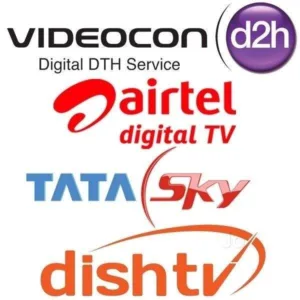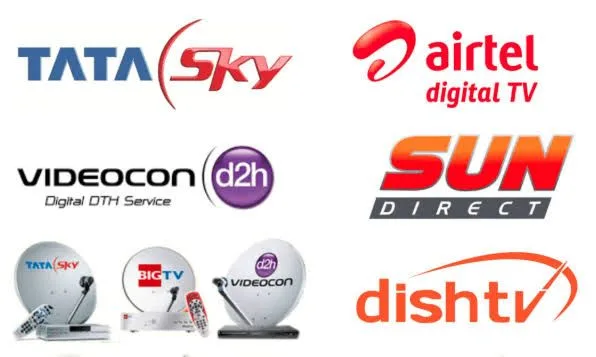14 June 2024
DTH business in India. 100 million+ turnover!!! Positively read blog.
- DTH business in India
- Introduction
- Let’s know more about the fascinating journey of Direct-to-Home (DTH) television in India:(DTH business in India)
- Let’s explore the impressive growth trajectory of the Direct-to-Home (DTH) industry in India:(DTH business in India)
- Let’s explore the fascinating journey of DishTV, the pioneer in India’s Direct-to-Home (DTH) television landscape:(DTH business in India)
- Tata Sky has indeed carved a unique niche in India’s Direct-to-Home (DTH) landscape. Let’s explore their customer-centric approach and innovative initiatives:(DTH business in India)
- Let’s explore Airtel Digital TV, which has made significant strides in India’s Direct-to-Home (DTH) landscape:(DTH business in India)
- Let’s explore Sun Direct, a prominent player in India’s Direct-to-Home (DTH) television space, with a strong foothold in the southern states:(DTH business in India)
- Let’s explore Videocon d2h, a significant player in India’s Direct-to-Home (DTH) television landscape:(DTH business in India)
- Let’s delve into the dynamic landscape of the Indian Direct-to-Home (DTH) market. Here are some key trends and factors shaping the industry:(DTH business in India)
- Let’s explore some of the challenges that the Direct-to-Home (DTH) industry faces:(DTH business in India)
- Indeed, the future of India’s Direct-to-Home (DTH) industry holds exciting possibilities. Here are some growth opportunities:(DTH business in India)
- Conclusion(DTH business in India)
DTH business in India
Introduction
Direct-to-Home (DTH) television(DTH business in India) has revolutionized the broadcasting industry in India. Since its inception in the early 2000s, DTH has dramatically altered how Indian consumers access television content, offering a viable alternative to the traditional cable TV. This blog explores the journey of the DTH business in India, its current landscape, challenges, and the future prospects of this dynamic industry.
Let’s know more about the fascinating journey of Direct-to-Home (DTH) television in India:(DTH business in India)
- Satellite Television Origins:
- The concept of satellite television dates back to the mid-20th century when scientists and engineers began experimenting with transmitting TV signals via satellites orbiting the Earth.
- In 1962, a pivotal moment occurred when the first television signal was relayed from Europe to the United States via the Telstar satellite. This laid the groundwork for satellite television as we know it today.
- Advent of DTH:
- Direct-to-Home television services emerged in the 1980s, offering an alternative to traditional cable and broadcast networks.
- DTH technology allowed signals to be transmitted directly to a small dish installed at the viewer’s premises, bypassing the need for intermediary infrastructure.
- This revolutionized TV access, especially in remote or rural areas where cable infrastructure was lacking.
- Evolution of TV Technology:
- As DTH gained popularity, demand for higher picture quality and better sound grew exponentially.
- High Definition (HD) TV technology emerged, offering significantly improved resolution and audio fidelity compared to standard definition broadcasts.
- HD TV provided sharper images, vibrant colors, and immersive surround sound, enhancing the overall viewing experience.
- Rise of Ultra High Definition (UHD):
- The evolution didn’t stop at HD; it continued with Ultra High Definition (UHD), also known as 4K resolution.
- UHD offers four times the pixel density of 1080p HD, resulting in unparalleled clarity and detail.
- Viewers can discern finer textures, sharper edges, and lifelike colors, making UHD the ultimate choice for cinephiles and enthusiasts alike.
Let’s explore the impressive growth trajectory of the Direct-to-Home (DTH) industry in India:(DTH business in India)

Pic credit: Pinterest
- Technological Advancements:
- The transition from analog to digital broadcasting was a game-changer. DTH services provided viewers with crystal-clear HD content, interactive features, and improved audio quality.
- The shift to digital also allowed for more efficient use of satellite bandwidth, enabling a wider range of channels and services.
- Regulatory Support:
- The Indian government recognized the potential of DTH and actively supported its growth.
- Favorable policies, licensing frameworks, and fair competition regulations encouraged private players to invest in DTH infrastructure.
- This support paved the way for healthy competition and innovation in the industry.
- Market Demand:
- As India’s middle class expanded, so did the appetite for quality entertainment.
- DTH services offered a diverse bouquet of channels, regional content, and exclusive programming.
- Viewers appreciated the flexibility to choose their preferred channels and pay only for what they wanted to watch.
Let’s explore the fascinating journey of DishTV, the pioneer in India’s Direct-to-Home (DTH) television landscape:(DTH business in India)

Pic credit: Pinterest
- Inception and Vision:
- Launch Date: DishTV made its debut on 2 October 2003, marking the birth of DTH services in India.
- Strategic Approach: Unlike competing with established cable operators in urban areas, DishTV took a different route. It focused on serving rural and underserved regions where cable TV infrastructure was lacking.
- Early Challenges and Growth:
- Transponder Limitations: Initially, DishTV had only four transponders, allowing them to offer a modest 48 channels. In contrast, analog cable provided 60 channels at a lower cost.
- Content Acquisition: Securing content was another hurdle. Star channels were initially unavailable, but DishTV persevered.
- Market Penetration:
- Rural Focus: DishTV strategically concentrated on cable-dry and cable-frustrated markets, gradually building its subscriber base.
- Acquisition Milestone: Within two years of its launch, DishTV garnered an impressive 350,000 subscribers.
- Collaboration and Expansion:
- Star-Zee Truce: Legal battles between Star and Zee ended in 2007, leading to a collaboration. DishTV gained access to more transponders, enabling it to offer 150 channels—more than any other Indian DTH service at the time.
- Merger with Videocon d2h:
- In 2018, DishTV merged with Videocon d2h, creating India’s largest DTH provider.
- This strategic move strengthened their position and expanded their reach across the country.
Tata Sky has indeed carved a unique niche in India’s Direct-to-Home (DTH) landscape. Let’s explore their customer-centric approach and innovative initiatives:(DTH business in India)

Pic credit: Pinterest
- Agility and Adaptability:
- Tata Sky’s agility in adapting to change sets it apart. During the pandemic, they seamlessly transitioned to remote work, ensuring employees’ well-being.
- Their investment in high-end technology facilitated collaboration, remote work infrastructure, and cloud-based HR systems.
- Employee Well-Being:
- Recognizing that employees lacked home workstations, Tata Sky shipped office tables, ergonomic chairs, and large screens to their homes.
- They also provided broadband connections and organized virtual Zumba classes, nutrition sessions, and motivational talks.
- E-Learning Courses:
- Tata Sky’s HR team designed email campaigns focusing on behavioral, functional, and emerging skillset needs.
- Platforms like Skillsoft, Internal University, and Edcast empowered employees to upskill and adapt.
- Evolution of Tata Sky:
- Tata Sky has transformed from a mere DTH provider to a profitable, customer-centric content delivery source.
- Their employee profile now aligns with the evolving business landscape.
Let’s explore Airtel Digital TV, which has made significant strides in India’s Direct-to-Home (DTH) landscape:(DTH business in India)
- Inception and Ownership:
- Launch Date: Airtel Digital TV began its DTH satellite television service in India on 9 October 2008.
- Parent Company: It is owned by Bharti Telemedia Limited, a wholly-owned subsidiary of Bharti Airtel.
- Distribution Network:
- Airtel Digital TV leverages the extensive distribution network of its parent company, Bharti Airtel.
- This network ensures widespread coverage, reaching both urban and rural areas across the country.
- Subscriber Base:
- As of fiscal year 2022, Airtel Digital TV had approximately 15.9 million subscribers in India.
- Their commitment to quality content and customer satisfaction has contributed to their growing user base.
Let’s explore Sun Direct, a prominent player in India’s Direct-to-Home (DTH) television space, with a strong foothold in the southern states:(DTH business in India)
- Regional Focus:
- Sun Direct caters to viewers in the southern regions of India, including Tamil Nadu, Andhra Pradesh, Telangana, Karnataka, and Kerala.
- Their content lineup emphasizes regional languages, culture, and preferences.
- DTH Packages:
- Sun Direct offers both SD+ (Standard Definition) and HD+ (High Definition) connections.
- SD+ DTH: This budget-friendly option provides a wide variety of channels, including regional ones.
- HD+ DTH: It boasts HEVC (High-Efficiency Video Coding) technology, delivering superior video and audio quality—five times better than standard definition.
- Language-Based Packages:
- Sun Direct tailors its DTH packages based on language preferences. You pay only for the channels you watch.
- Whether it’s Tamil, Telugu, Kannada, Malayalam, Bengali, Marathi, Odia, or other languages, Sun Direct has you covered.
- Nearest Sun Shine Centres:
- If you need assistance or want to explore their offerings further, check out their Sun Shine Centres near you.
Let’s explore Videocon d2h, a significant player in India’s Direct-to-Home (DTH) television landscape:(DTH business in India)

Pic credit: Pinterest
- Merger with Dish TV:
- In 2018, Videocon d2h merged with Dish TV, creating the largest DTH operator in India.
- This strategic move combined their strengths, expanded their subscriber base, and enhanced their service offerings.
- Content and Regional Focus:
- Videocon d2h offered a diverse channel lineup, including regional content catering to various linguistic preferences.
- Their focus extended beyond major cities, reaching viewers in smaller towns and rural areas.
- Innovations and Customer Experience:
- Videocon d2h introduced features like 4K Ultra HD channels, personalized playlists, and interactive services.
- Their commitment to customer satisfaction contributed to their loyal user base.
Let’s delve into the dynamic landscape of the Indian Direct-to-Home (DTH) market. Here are some key trends and factors shaping the industry:(DTH business in India)
- High-Definition Content:
- Consumers now expect superior visual quality. High-definition (HD) and Ultra HD (4K) channels have gained popularity.
- DTH providers continually enhance their content offerings to meet this demand.
- Value-Added Services:
- Beyond traditional TV channels, DTH operators offer interactive services. These include video-on-demand (VOD), gaming, and educational content.
- Viewers appreciate the flexibility to access personalized content at their convenience.
- Regional Content:
- India’s linguistic diversity drives the need for regional channels. Viewers seek content in their native languages.
- DTH providers curate regional content, catering to specific cultural preferences.
- Bundled Services:
- Operators explore synergies by bundling DTH services with broadband and OTT platforms.
- Bundled packages offer convenience and cost-effectiveness for consumers.
Let’s explore some of the challenges that the Direct-to-Home (DTH) industry faces:(DTH business in India)

DTH business in India. Pic credit: Pinterest
- Intense Competition:
- The DTH market is highly competitive, with multiple players vying for subscribers.
- Operators must continually innovate, improve services, and differentiate themselves to retain and attract customers.
- Content Costs and Acquisition:
- Securing quality content involves substantial costs. DTH providers negotiate with broadcasters for channel rights.
- Balancing content variety, exclusivity, and pricing is crucial.
- Technological Advancements:
- As technology evolves, DTH operators must keep pace. This includes adopting HD, UHD, and interactive features.
- Investing in infrastructure upgrades and staying ahead of consumer expectations is a challenge.
- Regulatory Compliance:
- DTH services operate under regulatory guidelines. Compliance with licensing, pricing, and content regulations is essential.
- Changes in policies can impact business models and operations.
- Customer Retention and Satisfaction:
- Ensuring a positive customer experience is vital. DTH providers face churn due to dissatisfaction or better offers from competitors.
- Offering personalized services, responsive customer support, and value-added features is critical.
- Evolving Consumer Behavior:
- Viewers increasingly consume content via OTT platforms. DTH operators must adapt to changing preferences.
- Bundling DTH with broadband or integrating OTT services can address this shift.
Indeed, the future of India’s Direct-to-Home (DTH) industry holds exciting possibilities. Here are some growth opportunities:(DTH business in India)
- Content Diversification:
- DTH providers can expand their content offerings beyond traditional channels. Original programming, niche genres, and exclusive content will attract viewers.
- Collaborations with OTT platforms can enhance the overall entertainment experience.
- Personalization and Recommendations:
- Leveraging data analytics, DTH operators can offer personalized content recommendations. Understanding viewer preferences and tailoring content will boost engagement.
- Interactive features like personalized playlists and dynamic channel lineups can enhance user satisfaction.
- Technological Advancements:
- Continued adoption of HD, UHD, and 4K technology will elevate the viewing experience.
- Integration with smart devices, voice assistants, and seamless multi-screen experiences will be crucial.
- Rural Penetration:
- Expanding into rural and semi-urban areas remains a growth avenue. Affordable packages, regional content, and localized customer support will be key.
- Bundled Services:
- Offering combined DTH and broadband services can create synergies. Bundling with OTT subscriptions provides added value.
- Seamless integration across platforms will be a competitive advantage.
